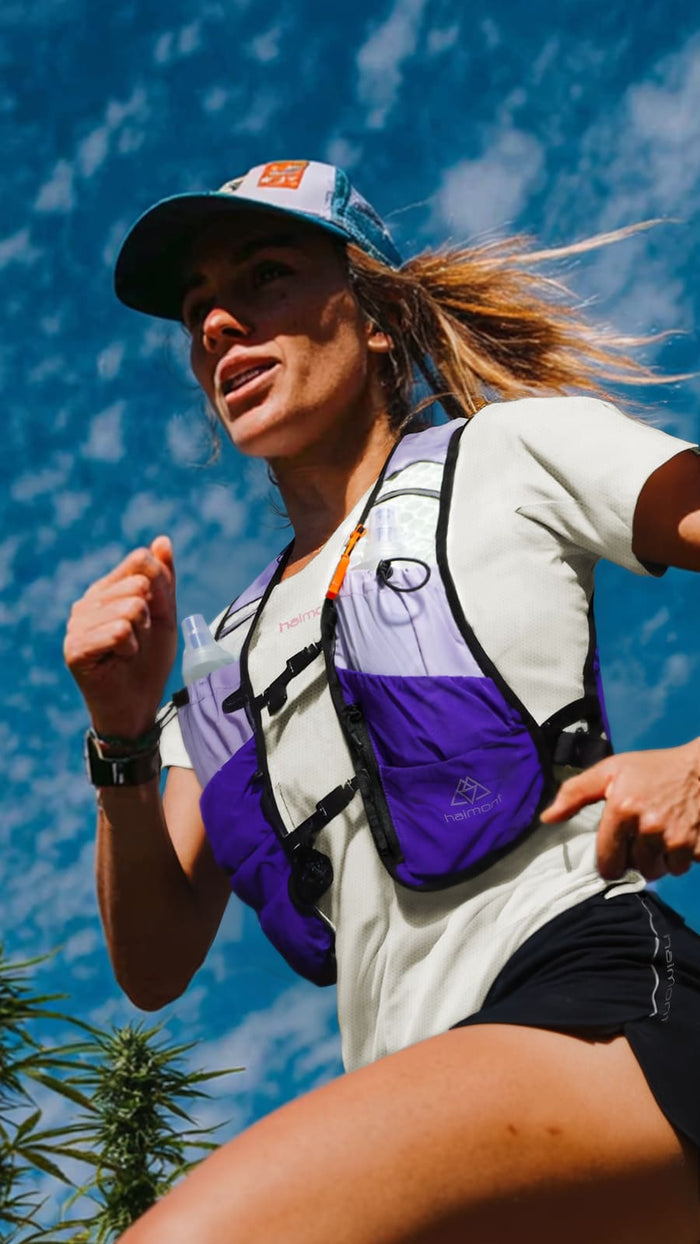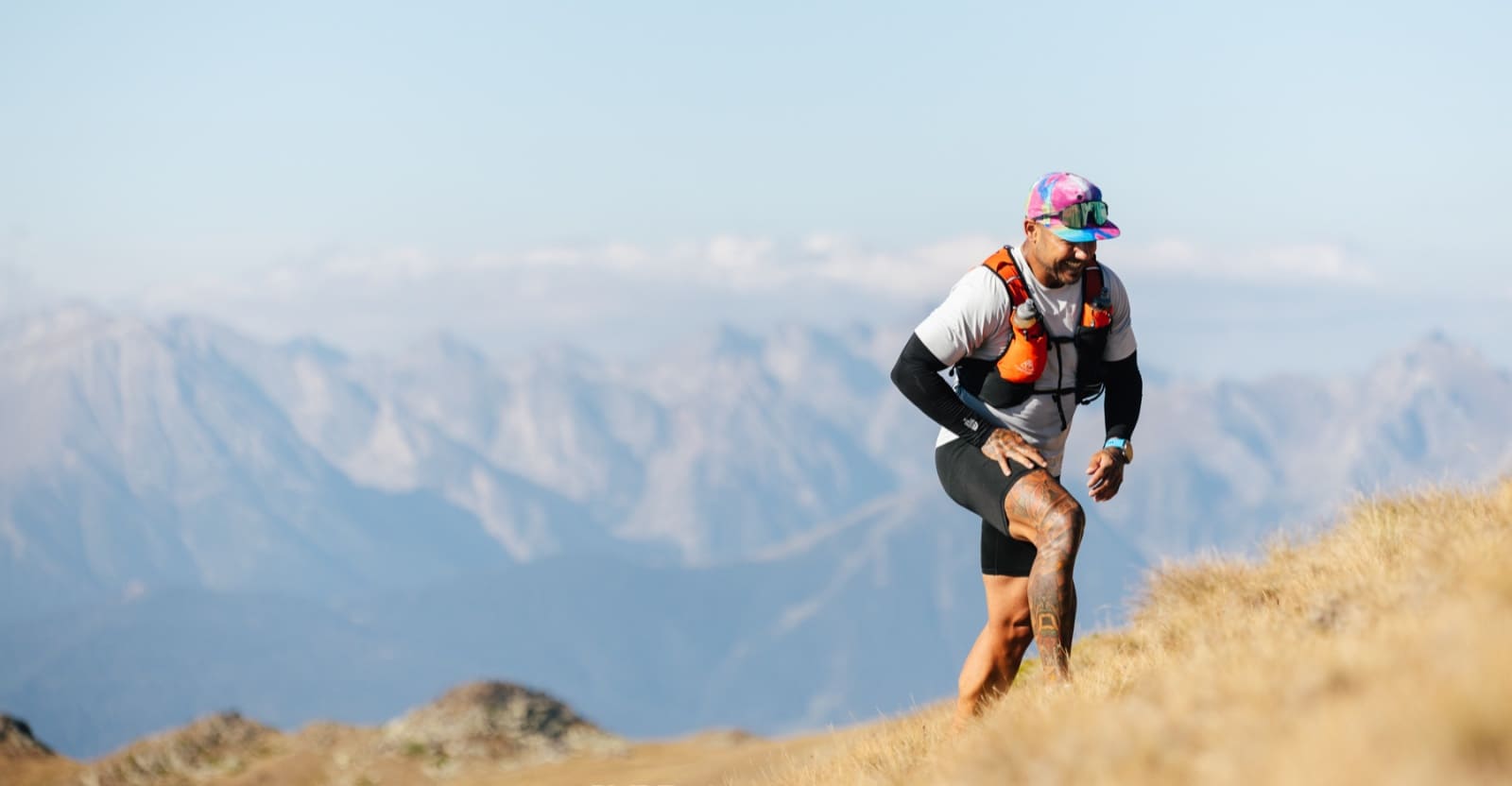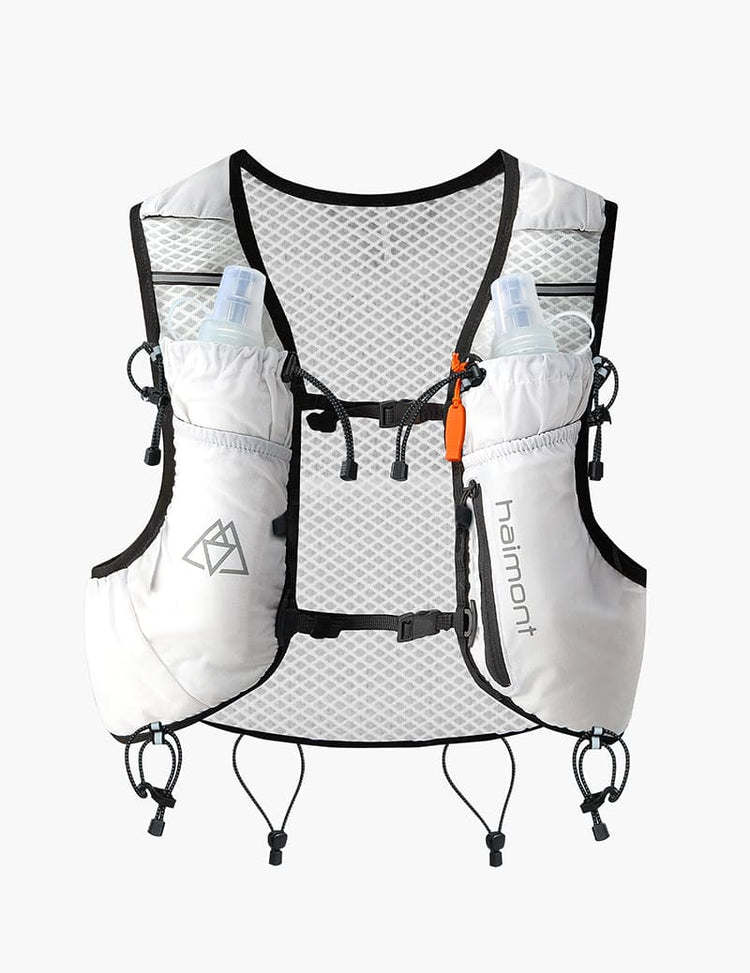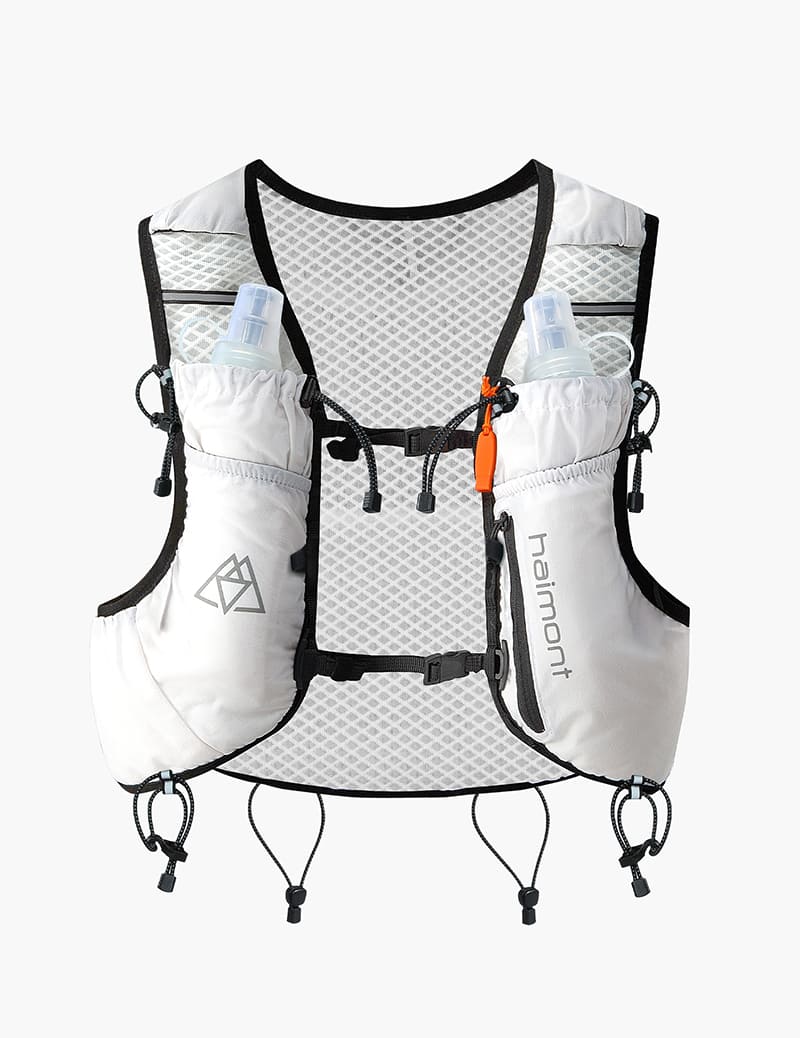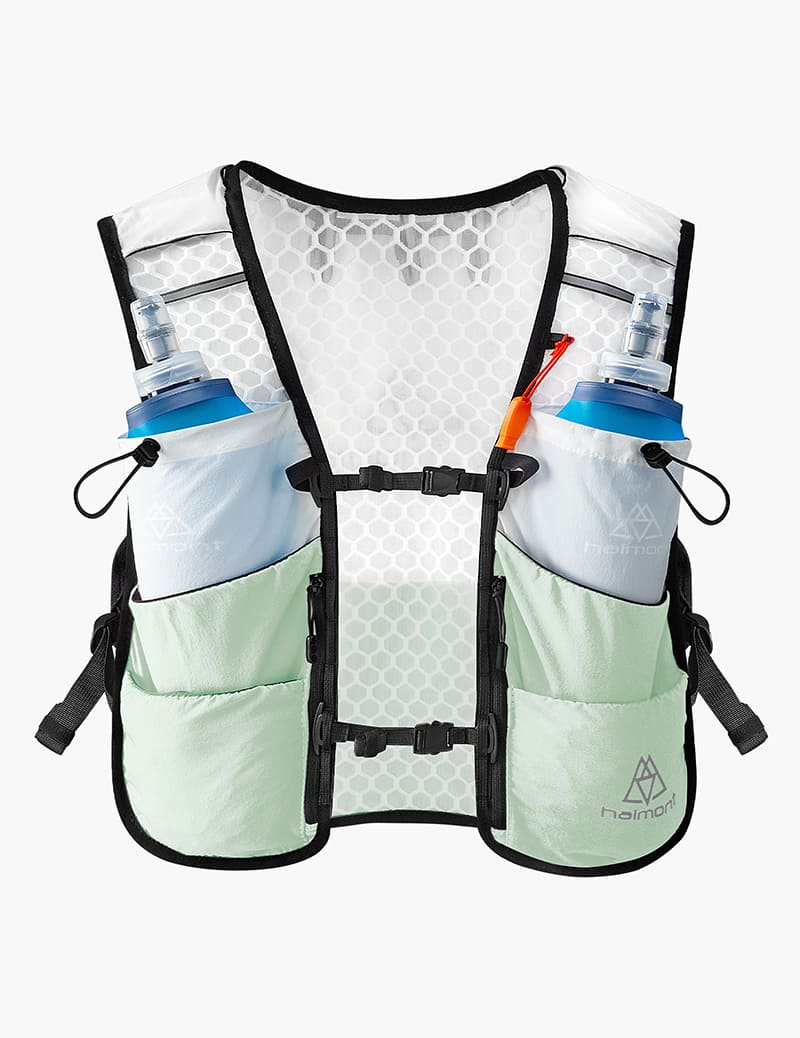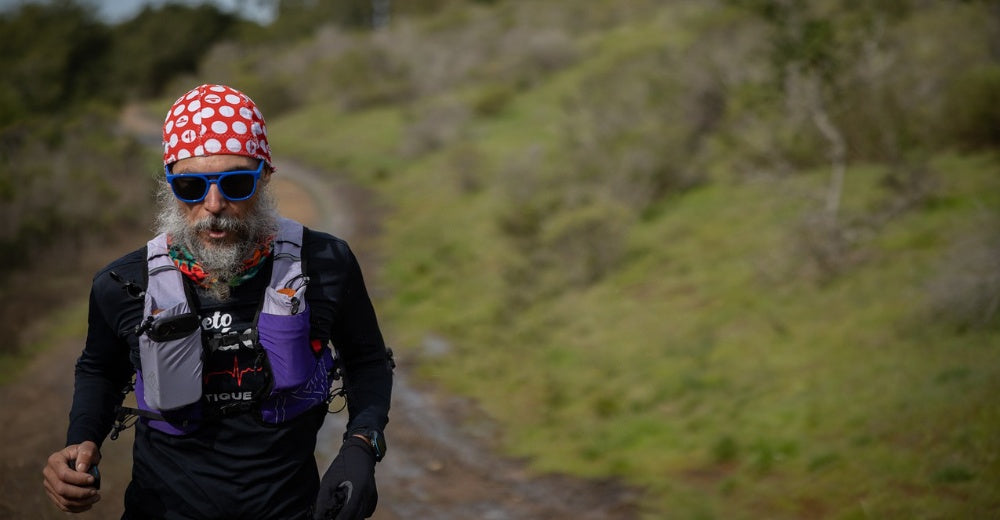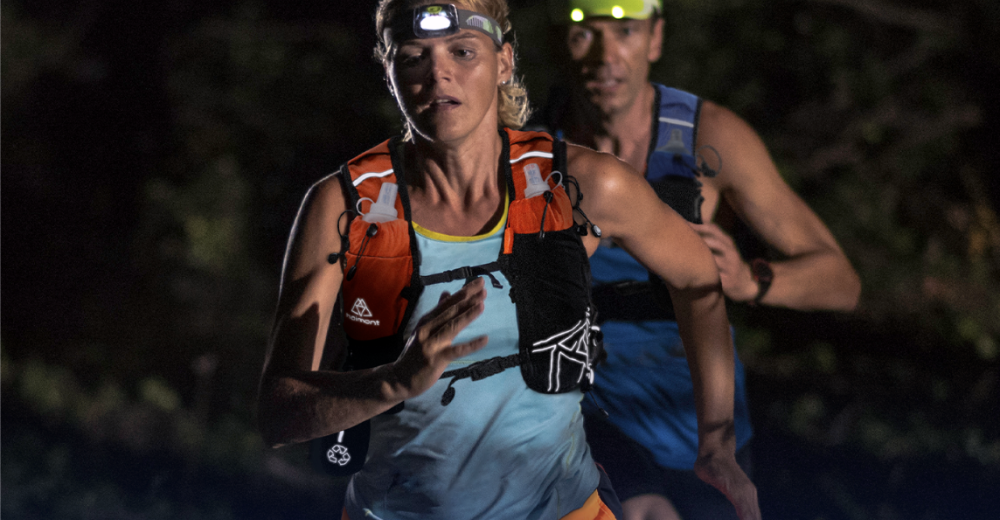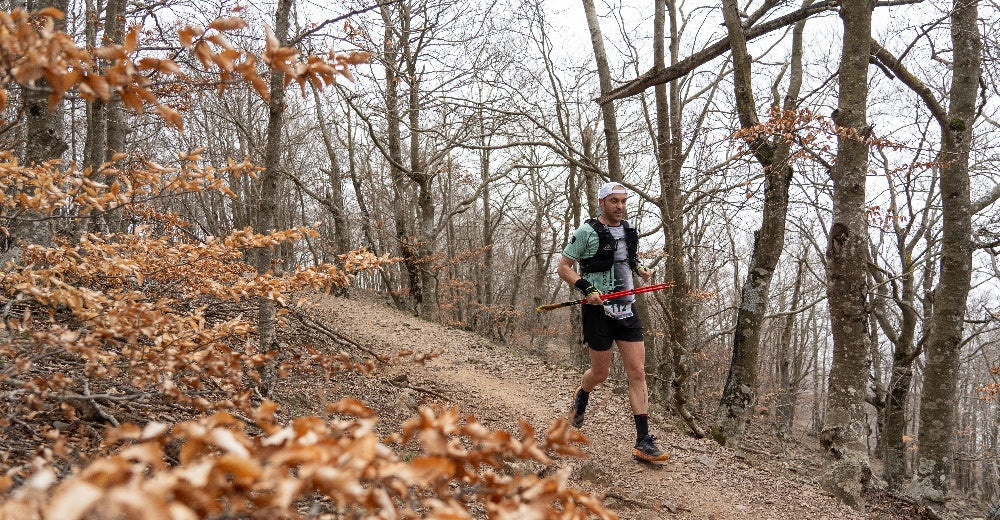Table of contents
Most runners, when they think of "training," often picture longer distances, faster paces, and stronger cardiovascular endurance. But trail running is never just a game of "speed"; it's an art of strategy, rhythm, and body control.
In real mountain environments, you face not only undulating terrain but also extreme temperatures, altitude changes, and technical terrain. Every uphill, downhill, or turn can cause energy depletion or a breakdown in rhythm.
Excellent trail runners are more than just "good runners."
They know how to switch to efficient mountain hiking on steep slopes, maintain a stable pace in complex terrain, and use long-term core strength training to keep their bodies rock-solid even after hours of shock and fatigue.
If you only focus on "running," you're missing the true underlying logic of trail running.
To run more lightly, for longer, and with more ease in the mountains, you must first learn how to walk, how to pace yourself, and how to use your strength to support your entire system. Whether you're a beginner just starting out in the mountains or a seasoned runner preparing to challenge yourself with a 100km run, these are essential lessons for reaching a higher level of mountain running.
Hiking Efficiency--Energy Conservation, a Key Ability for Long Distances
In trail running, "walking" is not a step backward, but a strategy.
Whether you're challenging yourself with a 20km short trail run or a 100km mountain ultramarathon, your ability to walk efficiently on key uphill sections determines your stability and duration in the second half of the race. Many beginners believe that "running the entire distance is the only way to be strong," but if you observe elite runners, you'll find that they walk almost all the way up long hills. The difference is: they walk fast, steadily, and energy-efficiently.
Why Hiking is More Important Than You Think
Energy Conservation
In trail running, ascents typically account for over 60% of total energy expenditure. If you choose to force yourself to "run" on every uphill section, your heart rate will quickly rise to Zone 4–5, and your glycogen reserves will be depleted in a short time. Conversely, scientifically switching to hill walking, keeping your heart rate in Zone 2–3 (aerobic state), can significantly extend your energy endurance.
For example:
The speed difference between "running" and "walking" on a 15% slope is only about 10–15%, but the energy expenditure difference can exceed 40%.
This means that those who can walk well can run longer.
Rhythm & Breathing
Hill walking is not rest, but a rebalancing of rhythm. You can reduce your breathing rate, adjust your heart rate, and restore blood flow to your muscles while walking. This rhythmic switching is a key ability to maintain stable output over long distances.
Muscle Recruitment
When you switch to walking, more power comes from the gluteus maximus, hamstrings, and calf muscles, effectively distributing the load on the quadriceps and preventing premature damage to the thighs. After a long period of training, you will clearly feel that: - going uphill will no longer "burn your legs", and your body will be able to exert force more steadily.

Proper Hiking Techniques (Technique Essentials)
Posture
- Lean slightly forward at approximately 10–15°, but avoid hunching or slouching.
- Keep your eyes focused on the ground 3–5 meters ahead to maintain route awareness.
- Relax your shoulders and let your arms swing naturally.
If you are wearing a Haimont UltraLight trail running backpack, adjust the shoulder straps to fit snugly but not compress your chest to reduce swaying when leaning forward.
Stride
- Take short, steady strides, avoiding large steps.
- Land close to your center of gravity, always keeping your weight on top of your feet.
- Maintain a cadence of 110–130 steps per minute (refer to hiking pacing guidelines).
Pole Coordination
- If the slope exceeds 12–15%, trekking poles are recommended.
- Rhythm Rule: Left foot forward → Right pole on the ground → Steady progress.
- The trekking pole angle is approximately 60–70°, with the point of force directly in front of the body.
Haimont Ultralight Carbon Aluminum Pole reduces leg load by more than 20% at its support angle on slopes, making it ideal for long ascents.
Breathing Pattern
Use a "2-step inhale, 2-step exhale" or "3-step inhale, 3-step exhale" rhythm. For steeper inclines, shorten the rhythm to "1 inhale, 1 exhale." Maintaining smooth breathing is the best indicator of whether you are overexerting yourself.
Systematic Training Methods
Hill Hike Repeats
- Location: 8-12% incline trails or treadmills
- Training Time: 30-45 minutes per session
- Rhythm: Zone 2-3 (conversational range)
- Focus: Center of gravity control, cadence stability, upper body posture
- 1-2 times per week, gradually increasing duration or incline
Pack Hike
- Wear a trail running backpack (such as a Haimont AirVest 5L or 8L),
- Fill it with a 1–2L hydration bladder and a small amount of gear to simulate the weight of a real race. Training Time: 45–60 minutes
- Focus: Shoulder girth fit, body balance, and core stability.
The goal is not "the more weight, the better," but rather to familiarize yourself with "efficient walking while carrying weight."
Hill Intervals
- Choose a 200–400 meter elevation gain section.
- Walk quickly uphill (Zone 3–4), then jog slowly downhill to recover.
- Repeat 4–6 sets.
- Strengthen lactate tolerance and climbing rhythm.
- Technical Terrain Hike
- Train "foot placement accuracy" on irregular terrain such as rocks, tree roots, and loose soil.
- Learn to "land firmly before pushing off,"
- Simultaneously train the dynamic balance of the ankles and core.
How to Switch Between "Running" and "Walking" in Practice
Mastering "when to walk and when to run" is more important than simply training to run.
The following are judgment principles commonly used by top trail runners:
|
Status |
Recommended Action |
Judgment Criteria |
|
Heart rate rises to Zone 4 |
Switch to walking |
Breathing heavily, unable to speak a full sentence |
|
Gradient greater than 12% |
Switch to walking |
Speed is almost the same as running, but more energy-consuming |
|
Gentle downhill |
Switch to light running |
Use gravity to regain rhythm |
|
Technical terrain (rocks, slippery) |
Walk |
Prioritize stability and safety |
Tips: Many top runners use a "60-90 second run / 30 second walk" interval strategy to stabilize their energy output over long distances.
Recommended Practical Training Combinations
Add the following "Mountain Walking Special Day" each week:
- 45 minutes of hill walking (including 3 intervals)
- 15 minutes of trekking pole technique practice
- 15 minutes of light downhill jogging recovery
- Combined with core stability training (plank + single-leg glute bridge)
After consistently adhering to this for 4-6 weeks, you'll find that uphill running is no longer a "energy black hole," but rather your secret weapon for controlling rhythm and recovering energy.

Pacing Strategy-The "Hidden Rhythm Control" of Trail Running
One of the biggest differences between trail running and road running is that "pace" cannot be defined solely by numbers.
In mountainous environments, slope, altitude, temperature, and terrain type all distort the pace numbers on your watch.
Experienced runners understand that true pace is not about "speed," but about the distribution of energy and the balance of rhythm. To run longer, more consistently, and more beautifully, you must learn to establish your own "invisible rhythm control system" in the mountains.
Pace should not be measured in "minutes/kilometers," but in "feelings/stage."
Many beginners, when entering trail running, habitually use road running thinking to judge pace, such as hoping to maintain a "6'00/km" rhythm even on uphill sections.
However, in trail running, this is almost equivalent to "forced exhaustion."
Truly scientific trail running pace management should be dynamically adjusted according to changes in terrain and stage:
|
Segment Type |
Suggested Pace |
Heart Rate Range |
Energy Focus |
Suggested Strategy |
|
Starting Segment (Flat) |
Comfortable Slow Run (Zone 2) |
60–70% of Max HR |
Conservative Start |
Focus on smooth breathing; avoid being pulled by the group pace. |
|
Uphill Segment (Steep) |
Hiking + Short Running Intervals |
70–80% of Max HR |
Energy Conservation |
Maintain step frequency, shorten stride length. |
|
Technical Downhill |
Controlled Speed, Not Pursuing Fast |
≤70% of Max HR |
Core Stability |
Utilize gravity while maintaining a controllable center of gravity. |
|
Long/Gentle Downhill |
Steady Short Strides |
65–75% of Max HR |
Quick Recovery |
Relax legs appropriately and replenish energy. |
|
Final Stage (Within 10KM) |
Gradually Accelerate |
75–85% of Max HR |
Full Output |
Driven by both mindset and rhythm, push forward with a sense of pace. |
Key principle: In trail running, "control" is always more important than "sprinting." Those who can maintain a consistent output at every stage are the winners at the finish line.
Pace control centered on "Rate of Perceived Exertion (RPE)"
Rating is more recommended than simply using GPS pace.
This is the most practical self-paced management tool for trail runners, especially on courses with unstable GPS signals or complex terrain.
|
RPE Value |
Perceived Exertion Description |
Suitable Phase |
Training/Race Suggestions |
|
2–3 |
Comfortable breathing, able to converse |
Warm-up/Recovery phase |
Slow-paced running or recovery with fueling |
|
4–5 |
Slight breathlessness, but able to hold a steady conversation |
Uphill/flat tempo phase |
Sustainable for over 2 hours |
|
6–7 |
Heavier breathing, but still under control |
Moderate intensity climbing |
Primary pace during the mid-phase of a race |
|
8 |
Labored breathing requires focus to maintain |
High-intensity uphill or pre-sprint |
Short-term sustainable output |
|
9–10 |
Maximum exertion |
Final sprint phase |
Only sustainable for a very short duration |
Training Suggestions:
- Incorporate "rhythm-sensory running" exercises into your training, such as running for 20 minutes at RPE 5, switching to RPE 7 for 10 minutes, and then returning to RPE 5 for 15 minutes.
- Through such transitions, you can develop a sense of rhythm that allows you to switch freely between different intensities.
Uphill Rhythm: Let "Heart Rate," Not "Speed," Dominate You
In trail running, the most common stage for losing speed is uphill. Many runners push their heart rate beyond its limits in an attempt to "maintain speed."
The correct approach is to let your heart rate dominate your pace, not the other way around.
Practical Suggestions:
- Inclined below 10%: Maintain a slow jogging posture, keeping your heart rate ≤ 80% of your maximum heart rate.
- Inclined above 10–15%: Immediately switch to "mountain walking," using your hands and thighs for assistance; a stable rhythm is more important than speed.
- Steep slopes above 20%: Use an alternating "10 steps walk + 10 steps run" method to help regulate your breathing rhythm.
- In long-term training, you can incorporate:
- Weekly "Heart Rate Controlled Uphill Run" (RPE 6–7, 30–40 minutes)
- Bi-weekly "Temperature Climb Training" (segmented climbs + recovery, strengthening pace switching ability)
Downhill Pace: Replace "Sprinting" with "Pace"
Downhill sections often have the largest time differences in trail running, but they are also the most prone to knee fatigue and falls.
The truly efficient secret to downhill pacing is not "running fast," but "running steadily."
Haimont's professional advice
- Keep your upper body slightly forward, with your weight on the balls of your feet.
- Stride frequency is slightly faster than on flat ground, but stride length is shorter to prevent excessive momentum.
- Use trekking poles for shock absorption (such as the Haimont Ultra Carbon Trekking Pole) to maintain a balanced pace.
- Maintain the "smile test" on long downhill sections—if you can still easily smile, your pace is still within a safe range.
Psychology and Pace: The True Controller of Rhythm
Rhythm in trail running is not just about physical control, but also about mental discipline. Experienced runners experience a "breakdown point" during long distances—At that moment, the only thing that keeps them going isn't their legs, but their sense of rhythm.
Training Recommendations
- Incorporate "flow" exercises (over 1 hour of continuous moderate-intensity training) into every long-distance training session.
- Focus on breathing and cadence without looking at your watch or listening to music to develop "body rhythm recognition."
- During the race, prioritize controlling your breathing rhythm, then gradually adjust your stride rhythm.

Core Strength Training – Making Your Body a Stable “Energy Center”
Trail running demands more than just “being able to run”; it demands “stability.” You face not only the cardiovascular challenges of uphill runs but also the impact of downhill descents, shifts in your center of gravity due to technical terrain, and prolonged fatigue management. What supports your posture, rhythm, and output under this high load is core strength.
What is core strength?
Many people, when they hear “core,” only think of abdominal muscles, but it’s much more than that. The core refers to all the deep stabilizing muscle groups surrounding the spine—including the transverse abdominis, erector spinae, quadratus lumborum, gluteus maximus, obliques, multifidus, and pelvic floor muscles.
They act like an “internal scaffold system,” connecting the upper and lower limbs, maintaining body posture, and energy transmission. In trail running, the core acts like an energy transmission shaft:
- When going uphill, the core stabilizes the torso and transfers power from the legs to the whole body.
- When going downhill, the core helps the body resist shock and impact, protecting the knees.
- When fatigued, the core determines whether you can maintain posture and rhythm.
Three main goals of core training
Stability--Maintaining torso control on uneven terrain, preventing "wagging" of the lower back and "hip collapse." Typical exercises: Plank, Dead Bug, Bird-Dog.
Anti-rotation--The body generates torque during running, especially downhill or when turning. Anti-rotation training prevents excessive swaying of the lower back, conserving energy and preventing injury. Typical exercises: Pallof Press, Single-leg Deadlift, Side Plank with Rotation.
Power Transfer--Helping to efficiently transfer power between the upper and lower limbs, making strides lighter and more powerful. Typical training exercises: Glute Bridge, Russian Twist, Mountain Climber, Kettlebell Swing.
Trail running core training plan (refer to the weekly schedule)
|
Training Day |
Target |
Action Combination |
Time/Sets |
Notes |
|
Monday |
Stability Foundation |
Plank, Bird-Dog, Side Plank |
3 sets × 30s each |
Focus on control, not quantity |
|
Wednesday |
Dynamic Control |
Mountain Climber, Lying Knee Tuck, Glute Bridge |
3 sets × 15 reps each |
Pay attention to breathing rhythm |
|
Friday |
Anti-Rotation Strength |
Pallof Press, Single-Leg Deadlift, Weighted Side Plank |
3 sets × 12 reps each |
Emphasize movement quality |
|
Weekend |
Comprehensive Training |
Post-run Core Circuit (includes Squat Jumps + Plank + Twists) |
20-minute circuit |
Combine with hill running training |
Haimont suggests: Core training should focus on consistency and control, not high intensity.
Maintaining at least 2-3 core training sessions per week, 20-30 minutes each, is sufficient to bring about a significant and stable improvement in physical fitness.
Relevance to Trail Running Movement
Uphill
Core stability helps maintain an upright posture, preventing a "hunched back" that restricts breathing.
The training focus is on the synergy of the transverse abdominis and gluteus maximus.
Downhill
A strong core allows you to "absorb shock," reducing the burden on your knees.
The training focus is on the control of the obliques and erector spinae.
Late Stages of Long Distances
The "fatigue resistance" of core strength determines your ability to maintain posture. Insufficient core strength leads to forward lean, shortened stride, and decreased energy transfer efficiency—directly impacting performance and safety.
Recommended Practical Training Modules
① Pre-Run Activation Module (10 minutes)
- Glute Bridge × 15
- Dead Bug × 15
- Side Plank × 20 seconds (per side)
Function: Awakens deep muscle groups and improves running posture stability.
② Post-Run Recovery Module (15 minutes)
- Bird-Dog × 12
- Pallof Press × 12
- Plank × 30 seconds
Function: Promotes blood circulation and strengthens body control.
③ Weekend Strengthening Module (20–30 minutes)
Combining mountain climbers/weighted squat jumps/core circuit training
Function: Simulates mountain energy transfer and rhythmic endurance.
Gear Assistance: An Extension of Core Control
In trail running, the core is not just the muscular system, but also the "extended control" of your gear.
- A well-fitting and stable trail running vest (such as the Haimont UltraLight series) reduces body sway and helps maintain a stable center of gravity.
- Lightweight trekking poles (such as the Haimont Ultra Carbon Trekking Pole) assist in distributing core strength during uphill and downhill sections, reducing strain on the lower back and hips.
- Well-fitting trail running shoes prevent gait deviation that leads to core compensatory fatigue. Core training combined with gear synergy is key for trail runners to build "integrated body control."
Trail running is not about muscle strength, but about "system stability."
When your core is strong, every step you take is more efficient;
When your core is weak, even the strongest cardiovascular system will have its rhythm disrupted by the terrain.
The core is the trail runner's "invisible armor." Every mountain training session is a true test of your core.
The allure of trail running is never just about speed.
It's an art of coordination involving the whole body, mind, and environment—uphill walking requires energy conservation; on flat terrain, it demands a balance of rhythm and breathing; downhill, it demands core stability and courage. When you run in the mountains, every breath, every transition, every rhythm, is a dialogue between the body and nature. It's not about brute force conquest, but a perfect blend of control and release.




